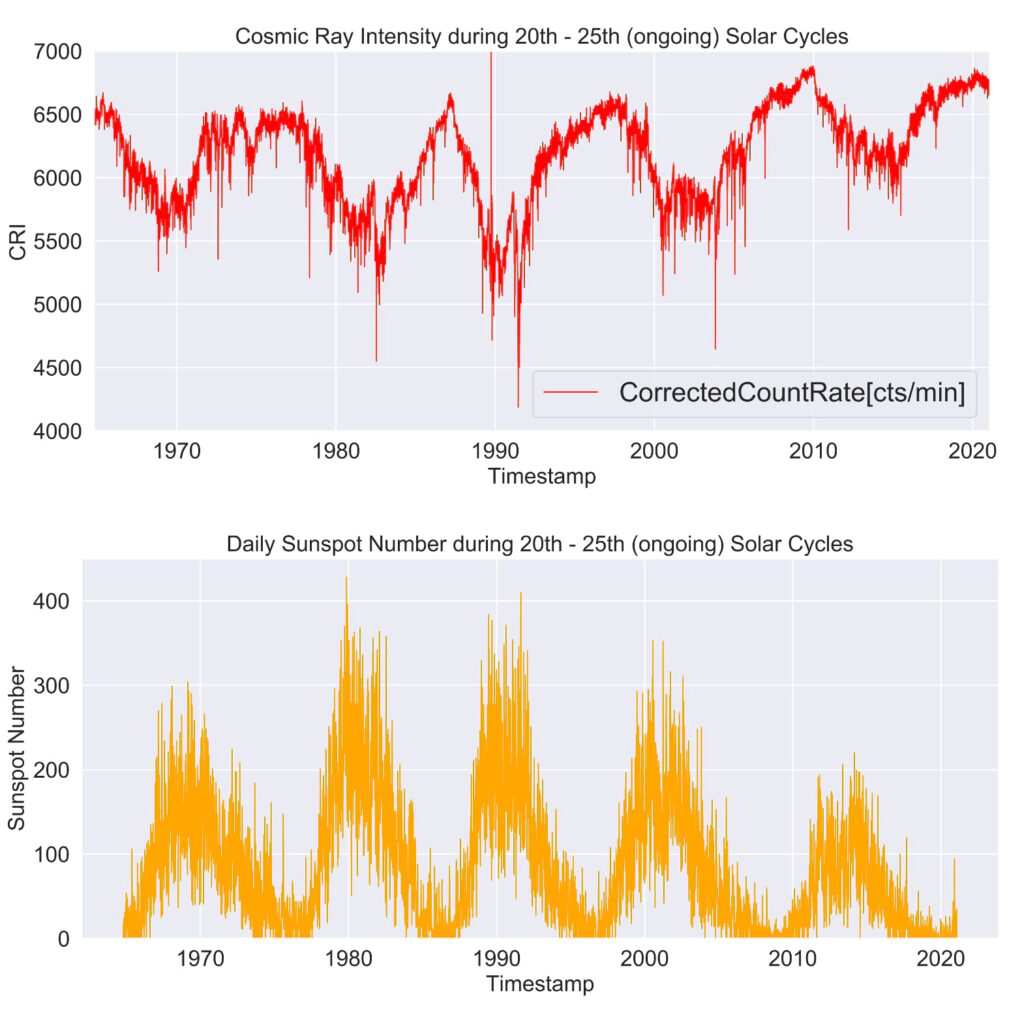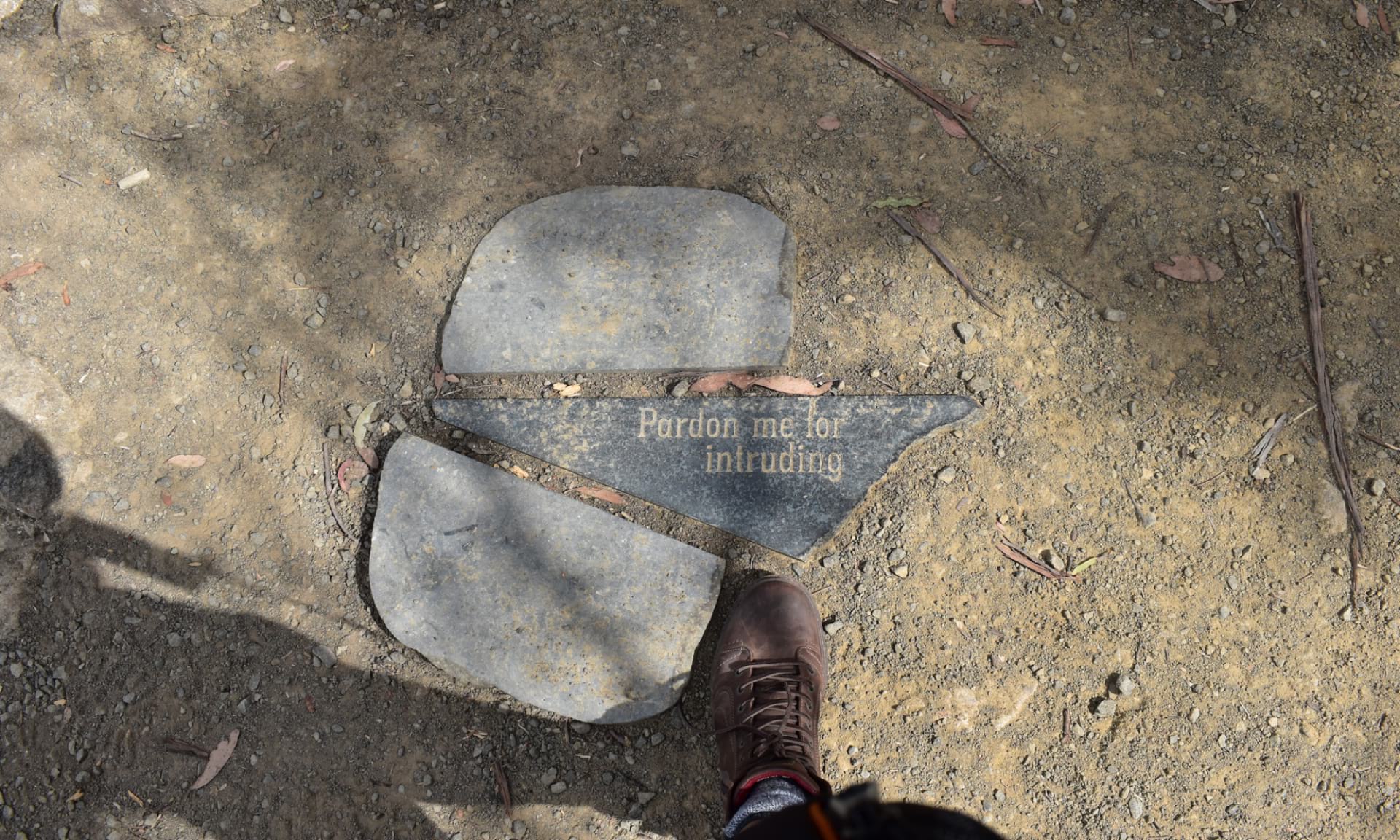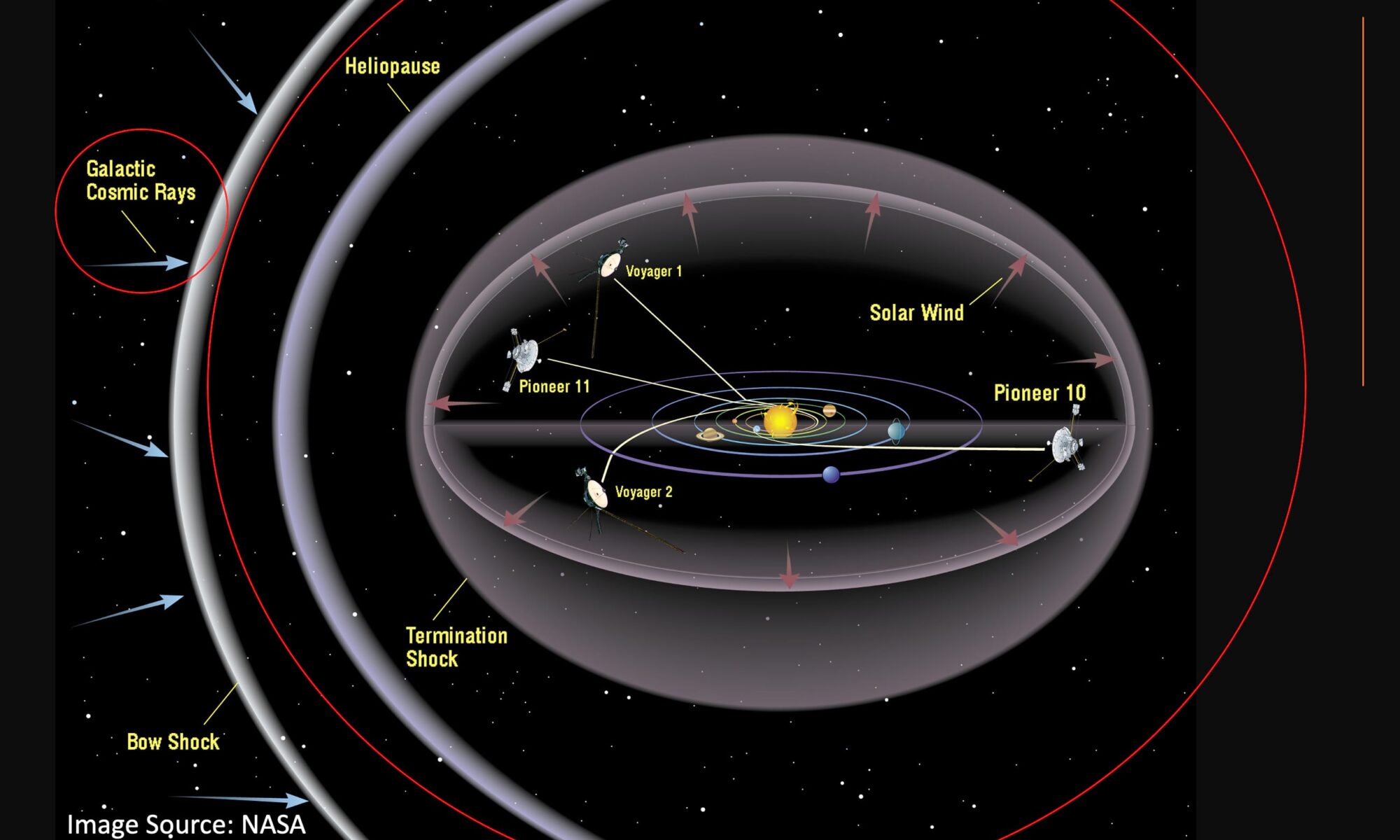This research project was developed under the period of 3 months as part of the completion of the Girls Educating Girls initiative (Arecibo Observatory). Here, we explore the topic of “waves”, Unit F.5 of the Department of Education program in Physics, which covers the study of properties of mechanical and electromagnetic waves. We download and analyse records of electromagnetic radiation coming from two different sources: the sun (solar activity) and from out of the solar system (galactic cosmic rays) and aim to reproduce the results of previous studies. The primary goal of this project is to provide the student (Ms. Stephanie Rodriguez) the opportunity to advance on her computational skills, engage in scientific communication with her mentor, and build some research experience. The secondary goal of this project is to prepare the student to be able to communicate her newly scientific knowledge to the general public in schools across Puerto Rican community, and consequently, inspire female students to pursue their careers in STEM !
Overview
Nearly all objects vibrate or oscillate due to an external disturbance – the ground moves during the passage of an earthquake; the string of a guitar shakes after being plucked; spiders detect their prey by the vibration of their webs, or buildings vibrate when a heavy truck is passing by. Those vibrations are intimately related to the concept of wave motion. Waves have their source as a vibration (e.g. Giancoli, 1992), and they transfer energy from one place to another by propagating through the medium at different frequencies. In the universe, we can identify different sources of waves, such as an earthquake that generates acoustic waves, and stars within our solar system that generate electromagnetic waves. The study of the properties of these waves and how they propagate through multiple environments lead to a better understanding of how the Earth and the entire universe works.
In this study, we download and analyse electromagnetic data of sunspot numbers (SN) from 1964 to 2021. We repeat the investigations carried out by previous studies which explore how solar activity correlates with the rate of cosmic radiation detected on Earth. Solar storms can create extreme electrical conditions on Earth and affect communication systems, GPS, and damage satellites, which can take many years to restore. Also, cosmic rays can cause damages to living cells because of their ionizing energy. We compare both electromagnetic radiations during solar cycles 20-24 and the ongoing solar cycle 25, and observe that galactic cosmic rays intensity and SN are negative-correlated ( Oloketuyi et al. 2020). Such observation indicates that low solar activity allows galactic cosmic rays to grow stronger on Earth. Therefore, variations of the cosmic radiation flux into the heliosphere registered on our planet happens as a consequence of the strengthen and weaken of the recent solar cycles. Also, solar cycle 24 appears to be weaker than previous solar cycles, giving rise to the expectations that solar cycle 25 will be similar or weaker than the previous.

By Stephanie Rodriguez, GEG outreach report (2021)
References
Giancoli, D. C. (1992). Physics: Principles with applications (3rd ed). Englewood Cliffs, N.J: Prentice-Hall.
Oloketuyi, J., Liu, Y., Amanambu, A. C., & Zhao, M. (2020). Responses and Periodic Variations of Cosmic Ray Intensity and Solar Wind Speed to Sunspot Numbers. Advances in Astronomy, 2020, 3527570. https://doi.org/10.1155/2020/3527570
If you would like to know more about Stephanie’s outreaching experience, or are interested in the data/codes she has downloaded/wrote, please let us know!

